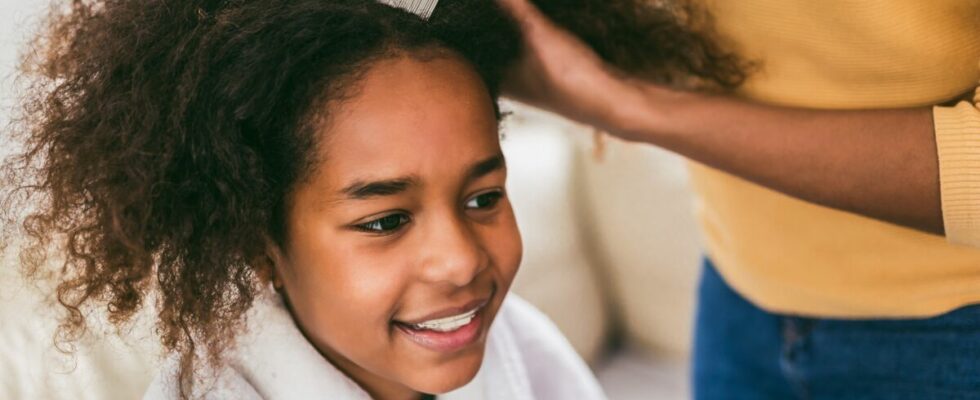Nits, these tiny little lice eggs, can be stubborn. Although they do not present a direct danger to health, they can be a source of concern, discomfort and itching, and it can sometimes be difficult to get rid of them.
1. Understand nits
The nit is simply a phase of development of the louse. In fact, the life cycle of the louse is made up of three distinct phases, according to the Canadian Pediatric Society. The first phase is the nit: these are grayish, beige or yellowish eggs. They are small, but still visible to the naked eye (the size of a grain of sand). Nits cling to the hair, relatively close to the scalp, and can be confused with dandruff. After 7 to 10 days in the egg, the nits hatch and give way to the nymphs. These physically resemble lice, but are small. The nymphs will then molt approximately 3 times before reaching their adult size. The adult louse will in turn seek to reproduce, again generating nits on the scalp. A female louse can lay between 3 and 8 eggs per day. The lifespan of the adult louse is around thirty days.
Lice cannot fly or jump, unlike their distant cousins, fleas. They do not have wings. Their only way of spreading is direct contact with an infested person. This is why transmissions are more common among young children, in schools or in daycare settings. Contamination can also occur after contact with a previously infested personal object, such as a hairbrush, hat or cap…
2. How to eliminate nits?
There are many ways to get rid of nits and lice, from traditional treatments to natural alternative methods. Anti-lice treatments can be found in drugstores. These are most often asphyxiating products based on dimethicone (a silicone oil). These products are often very effective and do not cause resistance, unlike insecticide products. These anti-lice products are also non-toxic, unlike certain pyrethrin-based shampoos, which were very common around twenty years ago, according to UFC-Que Choisir. These products come in many forms, such as lotions, shampoos, creams or sprays. These treatments, in addition to helping to eradicate lice living on the scalp, help remove nits.
There are also many home remedies and natural alternatives to combat lice and get rid of nits. Among the best-known techniques, we find: vegetable oils (coconut oil, olive oil or argan oil, etc.), vaseline, or thick gel. These different substances should be applied in a thick layer to the entire hair and scalp. Leave on overnight for smothering action. It is sometimes necessary to repeat this treatment several nights in a row to ensure its effectiveness. These natural remedies are quite effective against live lice, but there is little scientific data on the effectiveness of these methods on nits. However, a greasy and suffocating substance can help the nit slide over the hair and therefore get rid of it more easily. Be careful, however, with essential oils: although commonly recommended as a natural repellent, they can present risks of allergies or skin intolerance. This is why they should not be used in children under 3 years of age and avoided in pregnant and breastfeeding women.
One of the most effective tools remains the use of a fine comb. It is suitable for all ages and sensitivities as well as all hair types (although easier on fine, straight hair than on textured hair). Although on its own it is not enough to eradicate the problem of lice or nits, it is particularly effective when combined with another treatment method.
3. Prevention and useful tips against nits
It is important to keep in mind that certain anti-lice treatments sometimes lack effectiveness, according to Dr. Philippe Abimelec, dermatologist. Although they have passed laboratory tests and in theory present 100% effectiveness, misuse of the products, failure to respect their application time, or forgetting to renew treatments can reduce their effectiveness. If you followed the instructions exactly and the lice are still present on the scalp, then it may be a reinfection. It is therefore important to treat all infested people at the same time in order to avoid this phenomenon, as well as to clean the environment. For that :
- machine wash your textiles frequently at over 60°C, or isolate non-washable textiles for more than 3 full days;
- limit the sharing of personal objects (brushes, hats, comforters, etc.);
- tie up long hair;
- check the scalp regularly.
Sources
Read also :
⋙ Eyelash lice: where do they come from and how to protect yourself from them?
⋙ Pubic lice: transmission, cause, symptoms and how to recognize them, treatments
⋙ Itching: I scratch myself all the time, what’s behind it?
